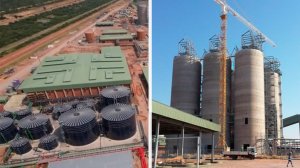While State-owned power utility Eskom was unable to cut off electricity supply to some of its neighbouring trade partners, it was able to reduce energy exports by 10% when load shedding was implemented locally.
The Department of Public Enterprise explained that Eskom currently supplied 950 MW of power to Mozambique, from where South Africa also sourced 1 448 MW of its power needs, while Lesotho, Swaziland, Namibia and Botswana were allocated capacity of 90 MW, 250 MW, 440 MW and 100 MW respectively.
However, Eskom was able to cut the supply of power to Botswana and Namibia when the utility declared load shedding in South Africa, the department pointed out in response to a Parliamentary question.
Swaziland and Lesotho were required to do proportional load shedding, as energy supplies were reduced by 10% when there was a load curtailment imposed on domestic customers.
This emerged as Eskom continued efforts to connect 3 725 MW of supply from independent power producers (IPPs) to the strained national grid.
Since 2013, Eskom had integrated 1 685.62 MW from 39 IPP projects, an initiative that required the building of new grid capacity and strengthening of the network to continue supporting IPP projects.
Eskom had committed to an additional 27 IPP projects being grid-connected in the next two years, with six projects scheduled to be integrated into the national grid this year.
Sixteen projects from the third bid window of the Renewable Energy Independent Power Producer Procurement Programme, for which R2.3-billion had been set aside to strengthen the network to accommodate the new capacity, would come online in 2016, with another five set to be connected in 2017.
EMAIL THIS ARTICLE SAVE THIS ARTICLE
To subscribe email subscriptions@creamermedia.co.za or click here
To advertise email advertising@creamermedia.co.za or click here











